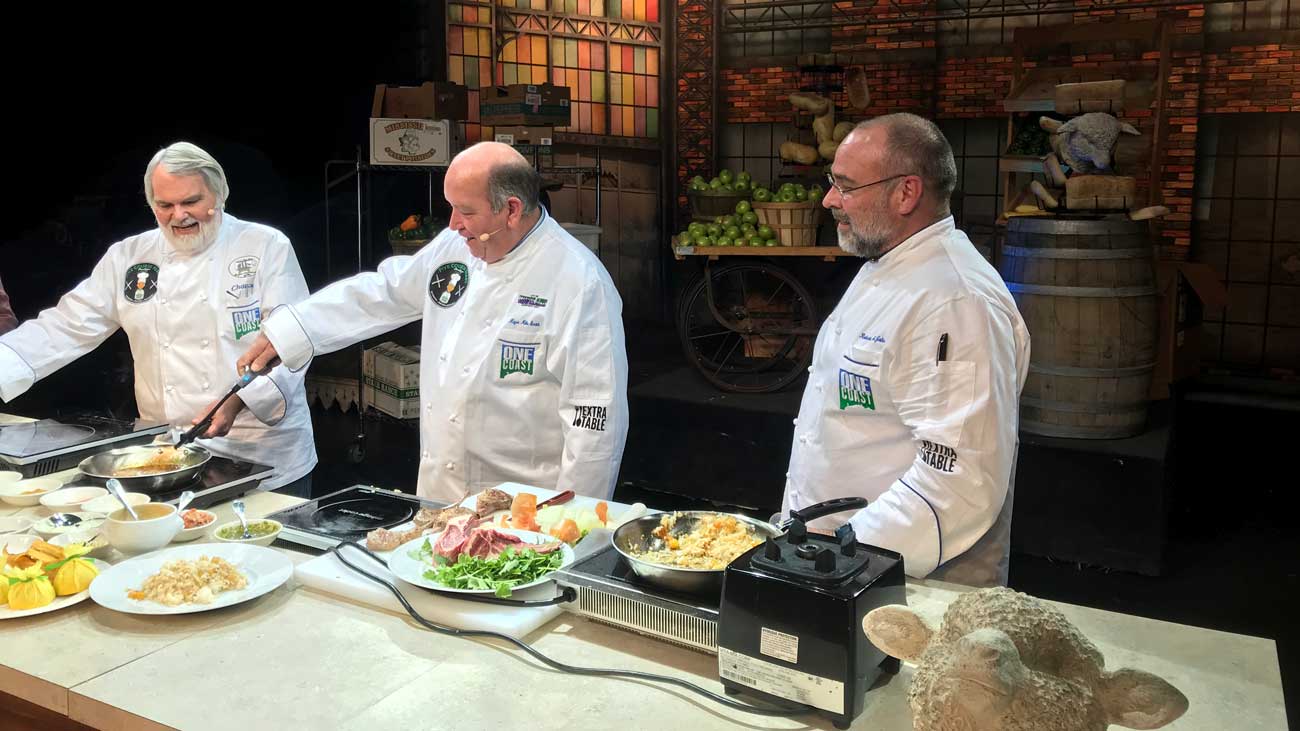“You eat with your eyes.” That’s what I was told by one of the chefs who first trained me. I worked under that supposition for several years. It wasn’t until I began learning about heirloom tomatoes in the early 1990s that I began to worry less about how something looks and more about how something tastes.
Sometimes ugly food just tastes better.
When the nouvelle-cuisine trend began to hit its stride in the mid 1980s everything became more composed. Fine dining plates were all about how the vegetables could be arranged on a plate and fanned out perfectly to enhance the visual appeal of the dish. Taste came in a distant second place and sometimes third to plate appeal. It’s food that Julia Child once quipped; “You know someone’s fingers have been all over it.”
There is nothing wrong with a dish looking pretty on a plate. But when it comes at the expense of flavor there’s a problem. Food should— first and foremost— taste good.
Heirloom tomatoes are the perfect example. For thousands of years people grew and ate tomatoes. They saved the seeds from their current crop for use in planting the next year’s crop. Beginning in South America, generation after generation planted, harvested, and ate certain varieties of tomatoes that were indigenous to that area or region.
Once tomato-crop yield was established, the only thing our ancestors worried about was— do they taste good? Today, most of the tomatoes one sees in a grocery store are nothing like the tomatoes that were eaten by previous generations. Today’s mass-produced tomatoes are grown with three things in mind: 1.) Can we pick them green? 2.) Can they be shipped thousand of miles without bruising? 3.) Will they look perfectly round and perfectly red in the grocery store?
Taste is a distant fourth when it comes to most tomatoes these days. Heirloom tomatoes are ugly. They have thin skins and bruise easily. They are odd shaped and, many times, are brownish, never brilliant fire engine red. But they always come in first in the category our ancestors prized most—taste.
Ugly food tastes good.
Butcher shop filet mignon is a prime example of this phenomenon. I know people who would choose a Select grade filet mignon that is tall, cut flat on the top, with flat, straight sides over a Prime grade filet with more marbling that was a little squatty and misshaped. There will be no comparison when it comes to flavor and taste. But some people think that height and weight make a great steak. That is almost never the case.
Cows are ugly animals, yet they give us some of the more beautifully delicious foods in our diets. Sure sheep look cute in children’s picture books book when one sees the real thing, muddy and matted in a pasture, the fairy tale comes to an end. Yet Pecorino Romano cheese and leg of lamb are some of life’s greatest treasures— ugly food.
If we only ate pretty animals there would be a lot of fried peacock restaurants out there. Japanese koi are beautiful, but I bet they taste pretty bad on a plate. Grouper is an ugly fish, but it tastes so good.
Someone needs to start an Ugly Food Movement.
Black truffles probably look like the dirty knuckle of a plant’s root to someone who had never seen one. But once they are brushed clean and shaved over risotto or pasta, even the pickiest of eaters would agree that, the truffle is one of the singular most beautifully rich and unique flavors in the world.
Guacamole looks like something left behind in a baby diaper but try and stop at one chip. It can’t be done, at least not at my house. Chocolate, on its own, is not the most appetizing thing visually. But we give chocolate a break because, well, because its chocolate and it is from the gods.
Granted there are some foods that look bad and taste bad, headcheese and sea urchin come to mind, but there are always exceptions to any rule.
Several years ago, James Lilkes, one of my favorite bloggers, released a book called “The Gallery of Regrettable Food.” While cleaning out his mother’s cookbook collection he ran across a lot of cooking magazines and cookbooks from the 1940s and 1950s. The blog morphed into a website that became so popular national publishers came knocking. The book is hilarious. Lilkes’ comments are brilliant, witty, and laugh-out-loud funny. Seriously, I know everyone says that they are laughing out loud these days— I am very skeptical about all of this so-called lol-ing— but this book brought me to tears.
Lilkes’ book is full of ugly food that probably tastes even worse than it looks. It focuses on a period in time that was probably the reason we had to endure the American nouvelle cuisine movement.
Keep it real, keep it tasting good, and keep it ugly.
Spinach Flan
2 cups Heavy cream
1 ea 10 oz. package frozen chopped spinach, thawed, drained well
4 ea Eggs
2 tsp Kosher salt
1 tsp Fresh ground black pepper
1/8 tsp Ground nutmeg
Grated Parmigiano Reggiano as needed for garnish
1 recipe Roasted Tomato Coulis
Preheat oven to 275. Combine heavy cream and spinach in a small sauce pot and warm over low heat, just to take the chill off. Remove from heat and puree until smooth. Strain through a chinois. Discard any solids that remain. Transfer to a bowl and combine remaining ingredients gently. Coat 8 4-6 oz. oven safe ramekins with non-stick spray and divide mixture among them. Bake in a water bath for 30 minutes or until set. Allow to cool slightly. Using a paring knife, loosen the flan from around the edges and unmold onto desired plate. Garnish with fresh grated Parmigiano Reggiano.
Yield: 8 servings
Roasted Tomato Coulis
6 ea Roma tomatoes
1 TB Vegetable oil
½ tsp Kosher salt
¼ tsp Fresh ground black pepper
Preheat oven to 350.
Coat tomatoes in oil and place on sheet pan in the oven for 20-30 minutes, until skins begin to wrinkle and begin browning. Rotate tomatoes every 10 minutes to avoid one side burning.
Allow to cool just enough to handle, remove skins and place in food processor or blender with salt and pepper. Puree until smooth. Pass through a chinois if a smoother texture is desired. Serve warm.
Yield: 1 cup



